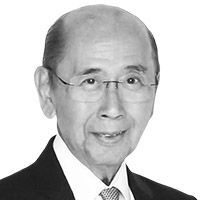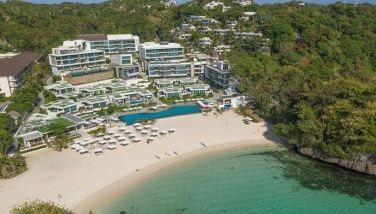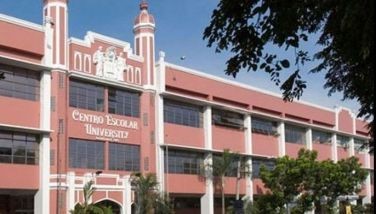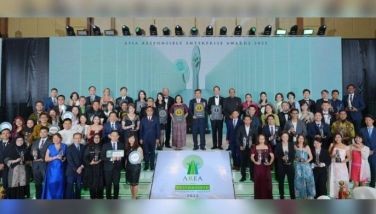New Zealand: A nation adapting

I just spent a very enjoyable and informative six days visiting Christchurch, Wellington and Auckland. They consider themselves a small nation who envisions their future as part of the Asian region. As a matter of background, I noticed that New Zealanders are awed by the continent of Australia. Yet, once you get to know and understand the country, it reminds me of the famous comment of my father, Carlos P. Romulo, when he was asked how he felt to be surrounded by tall Texans and he answered, “I feel like a dime among nickels.”
Why do I say this? One has to understand how the country compares to others in the world: 1st in the Corruption Perception Index as rated by Transparency International; 3rd in ease of doing business as rated by the World Bank; 5th in the Index of Economic Freedom rated by the Heritage Foundation; 6th in the Human Development Index as rated by the UN; 10th happiest OECD country; 21st highest GDP per capita in the world and 56th largest economy.
I attended the honorary advisers meeting of the Asia New Zealand Foundation which was celebrating its 20th anniversary. I have been a member since 1995 replacing my predecessor Foreign Affairs Secretary Raul Manglapus. The foundation is a non-profit and non-partisan organization dedicated to building New Zealanders’ knowledge and understanding of Asians. The organization was conceived by the former Foreign Minister Sir Don McKinnon and the Philip Burdon, the former Minister of Trade Negotiations. It was because of these two individuals that I have become an engaged admirer of New Zealand.
New Zealand has always been an ethnically diverse society but in the last 20 years the country has become diverse in new ways. The 2013 census confirms that slightly less than three quarters of the four million population is still “European.” However, there has been a rapid growth in the number of Asians representing 12 percent of the population. From 2006 to 2013, the fastest growing were the Indian and Filipino communities. The census indicates that there are 472,000 Asians up from 355,000 in 2006. In Auckland alone, I was informed by our very knowledgeable Honorary Consul General Paulo Garcia that there are 40,000 Filipinos and he further informed as that 100 new Filipino families arrive every month. Long gone is the overwhelming dominance of the immigrants from the UK and Ireland. It is important to note that 23 percent of the Auckland population is Asian. By 2020, the Asian community in Auckland is forecasted to constitute 30 percent of Auckland.
Recently, our foundation Chairman Philip Burdon commented: “This is a good occasion to remind ourselves that term “New Zealander” is not exclusive to people of Maori or European Heritage. Likewise, the words “Asian” and “foreign” are not interchangeable. The two words continue to be confused, particularly during times of economic or social insecurity. This year, there has been considerable heat around Auckland’s real estate market, with “Asians” accused of driving up property prices.” It is precisely because of these regrettable “irritations” that the foundation must continue to be sustained in the attainment of its objectives. He further noted: “The Foundation’s research released last October bodes well for the future. New Zealanders’ perception of Asia and Asian peoples tracked over 15 years has found that as immigration led to increased contact with Asian people, positive feelings about Asia grew.....The Foundation’s research found that most New Zealanders agree Asian people bring a valuable cultural diversity and they contribute significantly to the economy.”
It is equally important to note that New Zealanders also migrate to other lands. There are almost 670,000 New Zealanders in Australia. Also of note is the approach of immigration policy. They consciously have a very selective policy of determining the needs of the country. Not everyone can apply. One only has to review the webpage of New Zealand Immigration which in the spirit of transparency describes who are qualified to apply as an immigrant. For example, because of the recent Christchurch earthquake there is a need for construction workers. Filipino workers applied and are now present in Christchurch. Our energetic and aggressive ambassador, Virginia Benavides is constantly monitoring the status of our countrymen in relation to their wages and living conditions. She updated me on the challenges and opportunities in Christchurch which I had occasion to discuss with Prime Minister John Key during a dinner he tendered in honor of the honorary advisers of the foundation.
Author with New Zealand Prime Minister John Key
During the deliberations of the honorary advisers there was obviously a focus on how Asian cultures and values have made a positive impact on New Zealand. At the anniversary dinner held in the Northern Club of Auckland, I was privileged to speak on behalf of the honorary advisers, presumably because of my seniority as a member. At that time, I pointed out that even as I agreed about the positive impact of Asian culture and values it was the symbiotic relationship with Western values which will ultimately redound to the benefit of the nation. In conclusion, I paraphrased Charles Darwin’s statement that in the survival of the fittest, it is not the strongest who survive but those who can best manage change. I would suggest that New Zealand has indeed managed change and adapted to the changing world of the 21st century. From my perspective, New Zealand will become the model melting pot in Asia.
I would be remiss in discussing New Zealand if I did not recognize Ambassador Reuben Levermore who has been a worthy representative of his country. He leaves us at the end of the month and will become the new Ambassador to Thailand.
- Latest
- Trending





























